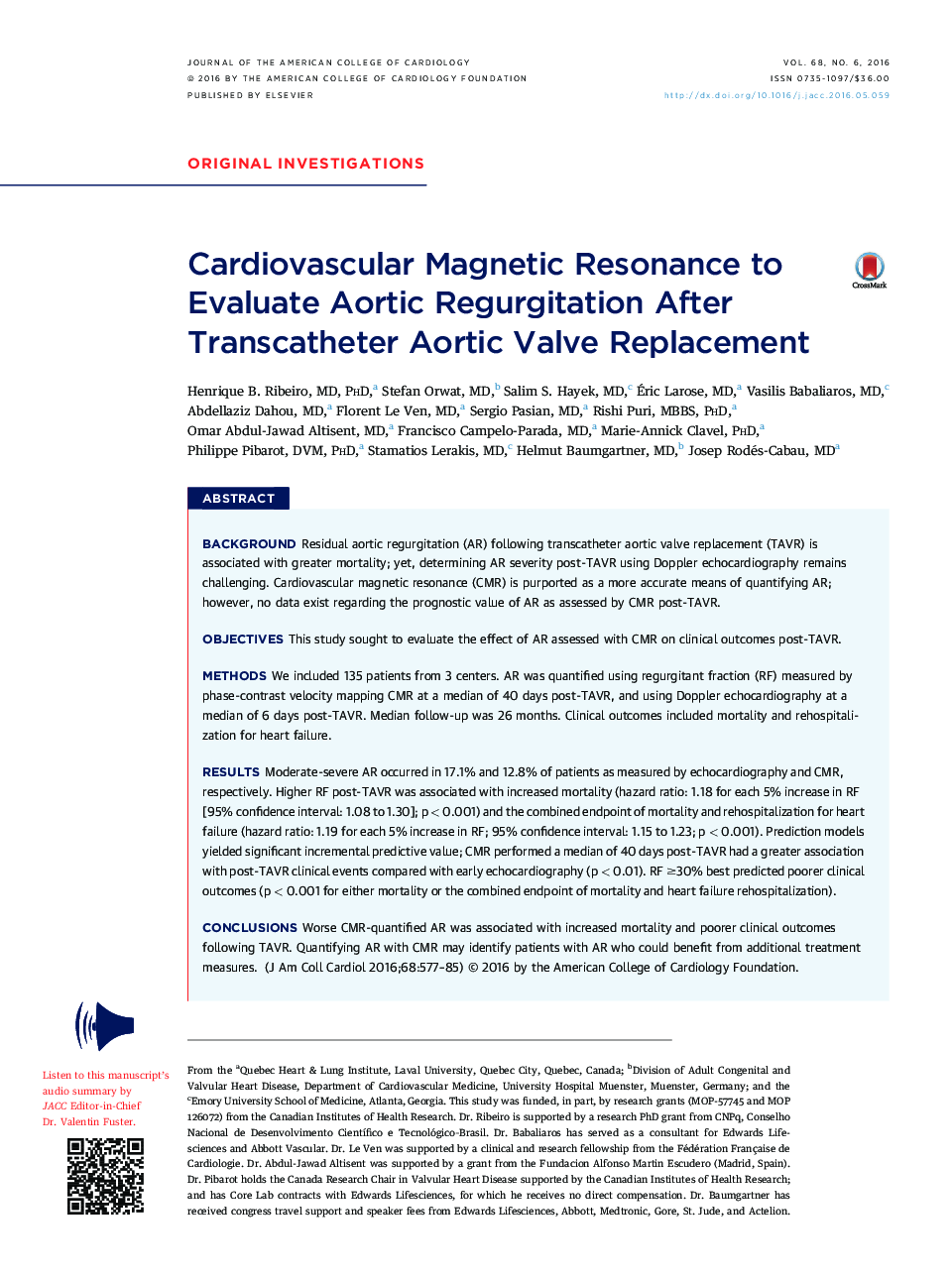| کد مقاله | کد نشریه | سال انتشار | مقاله انگلیسی | نسخه تمام متن |
|---|---|---|---|---|
| 2942815 | 1576981 | 2016 | 9 صفحه PDF | دانلود رایگان |

BackgroundResidual aortic regurgitation (AR) following transcatheter aortic valve replacement (TAVR) is associated with greater mortality; yet, determining AR severity post-TAVR using Doppler echocardiography remains challenging. Cardiovascular magnetic resonance (CMR) is purported as a more accurate means of quantifying AR; however, no data exist regarding the prognostic value of AR as assessed by CMR post-TAVR.ObjectivesThis study sought to evaluate the effect of AR assessed with CMR on clinical outcomes post-TAVR.MethodsWe included 135 patients from 3 centers. AR was quantified using regurgitant fraction (RF) measured by phase-contrast velocity mapping CMR at a median of 40 days post-TAVR, and using Doppler echocardiography at a median of 6 days post-TAVR. Median follow-up was 26 months. Clinical outcomes included mortality and rehospitalization for heart failure.ResultsModerate-severe AR occurred in 17.1% and 12.8% of patients as measured by echocardiography and CMR, respectively. Higher RF post-TAVR was associated with increased mortality (hazard ratio: 1.18 for each 5% increase in RF [95% confidence interval: 1.08 to 1.30]; p < 0.001) and the combined endpoint of mortality and rehospitalization for heart failure (hazard ratio: 1.19 for each 5% increase in RF; 95% confidence interval: 1.15 to 1.23; p < 0.001). Prediction models yielded significant incremental predictive value; CMR performed a median of 40 days post-TAVR had a greater association with post-TAVR clinical events compared with early echocardiography (p < 0.01). RF ≥30% best predicted poorer clinical outcomes (p < 0.001 for either mortality or the combined endpoint of mortality and heart failure rehospitalization).ConclusionsWorse CMR-quantified AR was associated with increased mortality and poorer clinical outcomes following TAVR. Quantifying AR with CMR may identify patients with AR who could benefit from additional treatment measures.
Journal: Journal of the American College of Cardiology - Volume 68, Issue 6, 9 August 2016, Pages 577–585